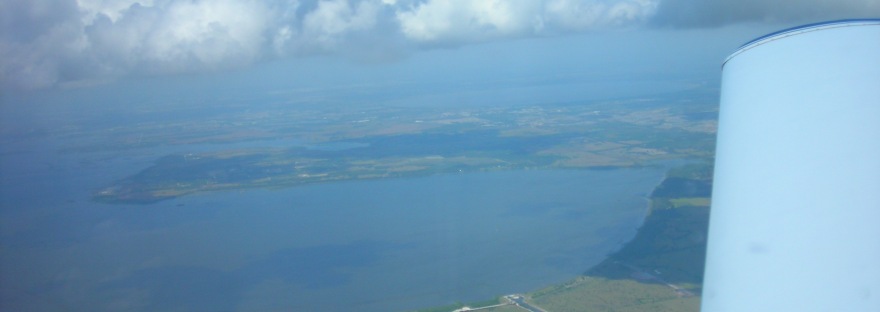By Josue Tirado, PSM, AGI, CFII, Remote Pilot
I write this article in honor of my uncle. He is my father figure and he was way advanced in the chicken/egg farming industry for his time. After a short meeting with him, I found out why he closed the business.
I only wish I knew the little I now know, and perhaps we would prevent my uncles business to close. My uncle is still with us and I wanted to write this in his honor. For all, he thought me and all the hard work he modeled for me. Love you “Tio Israel”.
Abstract
After being a farmer for a good portion of his life, my uncle decided to become a poultry farmer (Wikipedia, n.d.). The poultry business currently enjoys automation in several areas of the production chain. Even then, the 1970’s, my uncle implemented some mechanical ways for the collecting, sorting, packing and transporting of eggs to the market. In 1975 these automation, (mechanical assistance really), required significant human intervention.
The poultry farmer does more than collect, clean, sort and sells the eggs. (THE EGG COLLECTOR – Inside a Funny Organic Egg Farm, 2011). If the farmer wants a productive, high yielding operation, he must care for his chickens. The chickens need more than feed and water. They need their beaks and nails trimmed, feathers clipped, exercise and to be given antibiotics (Caughey, 2014).
I will introduce the concept of using UGVs as part of the poultry farming business. They will assist in the production process and play an integral part in the health of the birds.
Farm’s Health
With specialized sensors, the UGV can be placed in the furnished barn and catch the chicken. The UGV could trim their beaks, ensuring not to reach the “quick”, and trim the toenails (Caughey, 2014). The UGV can also trim feathers and administer the antibiotics. The UGV needs to have a way of tagging the chicken so as to be able to seek for the untreated or unattended. Several times per day the farmer walked into the barn, making sure to make noise for the chicken to hear. The chicken exhibited comical head movements. I never knew why my uncle would walk the barn for no apparent reason (Fasler, 2017)?
Harvest the Eggs
After eggs are collected (usually twice a day when done by hand), they need cleaning, sorting and packing. A UGV could be well adapted to these tasks. Often the chickens lay their eggs in the farm’s floor. UGV could collect these eggs (Tibot Technologies- pioneer in poultry robotics, 2018).
Chicken Die
Farmed chicken’s production decreases after around one year. But sometimes they just die. The carcass lies on the floor until detected. A UGV could detect these dead birds and remove them, thus keeps the farm healthy.
Sale of the Eggs
After packing the sorted eggs, the farmer needs to sell them. The eggs are packed in large 30 dozen boxes which are very heavy. A UGV is very capable of lifting and carrying these boxes to and from the cooled storage room. Then the UGV will carry these eggs again from the cooler to the transporting vehicle.
Selling the Chickens
After the chicken’s egg production starts to decrease, they are sold for meat. A UGV could collect the chickens and place them in the transporting boxes.
Technologies to Achieve These Tasks:
High Definition cameras, sensors, electronic relays semiconductor, computer chips, programming and even some artificial intelligence (AI).
Amortization
This technology can pay for itself not only by yields in production but also in preventions of illnesses. On the production side, one can easily realize the benefits of having UGV attending the farm 24/7, having the collection of eggs performed more often.
Scanning for carcass on every egg picking trip will positively impact the health of the farm. If one dead chicken gets sick the entire farmhouse can get sick, that it will be of great loss. The smallest farmhouse my uncle had held five thousand chickens. A loss of approximately $140,000 if they got sick and died. This figure does not account for the lost revenue from selling the chickens.
The use of a UGV in the poultry industry could equate to big sums of money savings. If we include the cost of having employees, then the savings become even more apparent: savings on payroll, payroll taxes, employee ‘s benefits like pensions and worker compensation costs.
This does not include the costs of infrastructure needed to house the employees: parking areas, break/lunchrooms, bathrooms, etc. The maintenance of these facilities also cost money.
Now the farmer can put some if not all of these savings into the upkeep of the UGV and consider some upgrade modifications.
References
( 2018, May 30). Retrieved from Tibot Technologies- pioneer in poultry robotics: http://www.tibot.fr/
Caughey, M. (2014, Mat 11). Retrieved from Community Chickens: https://www.communitychickens.com/how-to-trim-a-chickens-toenails/
Fasler, J. (2017, Sep 19). Retrieved from The New Food Economy: https://newfoodeconomy.org/first-autonomous-poultry-robot/
THE EGG COLLECTOR – Inside a Funny Organic Egg Farm. (2011, Jan 19). Retrieved from https://www.youtube.com/watch?v=xLX6LFW2n3c&feature=youtu.be
Wikipedia. (n.d.). Retrieved from https://en.wikipedia.org/wiki/Poultry_farming
